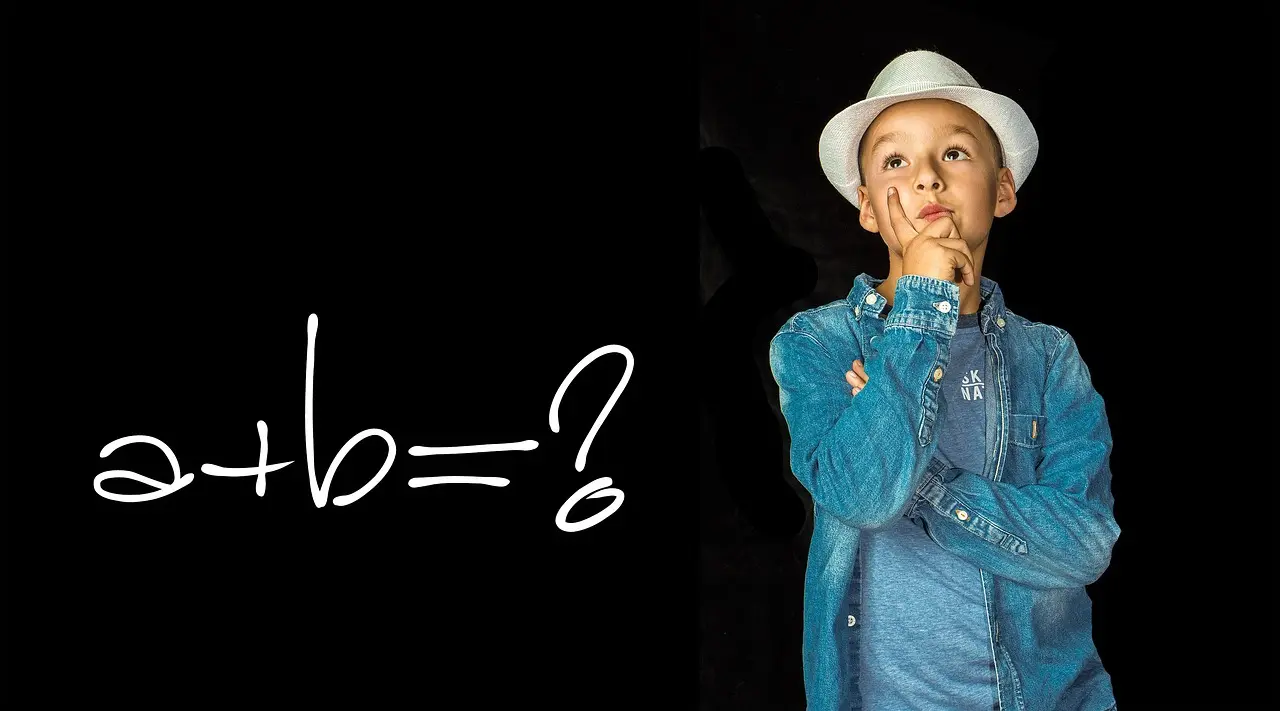Some homeschoolers fail at homeschool math. How do I know that? It’s because they don’t know how to help their children become proficient and then seek me out to fill the gaps. Therefore, in this post I want to outline what’s important in the process of teaching homeschool math and give some pointers on how to to do it well, as I did in this recent post.
The Trajectory of Homeschool Math
Grades one through five build the foundation for middle school and beyond, and I cannot overemphasize this. Starting early on, you want to build number sense. That means children feel numbers are beings with certain qualities. They are not merely abstractions referring to quantities, and this sense will express itself so beautifully once you get to geometry. The book, A Beginner’s Guide to Constructing the Universe, is an extraordinary resource for that. (You can use this book up the grades as well as your child’s concepts of the world expand.) Number sense also helps build enthusiasm, another key ingredient in our cake of good math, and that is because numbers come alive for students. They are beings, not just abstractions.
Next, you need to build their arithmetic. Times tables and math facts need to become as well learned as a second language. Only then will they be able to devote all their resources to the higher math processes involved in, say, algebra later on. Math facts need to be practiced rhythmically so they learn them, quite literally, by heart. In other words, you need to move the tables. For example, toss a beanbag back-and-forth between you and your student, alternating calling out all the numbers on the 6s path, such as 6 – 12 – 18 – 24 – 30 – 36 – 42 – 48 – 54 – 60 – 72…Then reverse it and go back down the path. This rhythmic approach coupled with movement is an incredibly efficient, fun, and appropriately challenging way that will leave them invigorated and proficient.
Other Considerations on Homeschool Math Methodology
You also need to practice mental math. Every day. Don’t skip a lesson without practicing it because this builds their ability to picture numbers. As we’ve discussed in other posts like this one, it is vital to exercise their imaginative thinking if you want them to become free, self-guided adults. Not to mention, it further builds their math muscles and number sense. As a side note, I highly encourage students to do calculations mentally. (They also need to be able to do them on paper – this will be vital in algebra and beyond. HOWEVER, being able to do complex calculations mentally is a vital skill.)
Finally, mastering fractions and decimals are a must for higher math. If they are still figuring out how to reduce a fraction in 6th grade, for example, they are going to be hurting when business math comes around. I really mean it. Get their times tables mastered through movement and written practice. Get their addition and subtraction facts solid – this can be done with written work, flash cards, mental math, and movement. Finally, get them as comfortable with fractions and decimals as the back of their own hand. Then, they will be ready for middle school math.
Some Suggestions for Rhythmic Work
Despite modern materialistic science believes, we don’t just think with our heads. I thinking actually permeate our whole body. Cognizance of this fact allows us to make full use of our children’s natural capacities. That is why I employ you to work on their math facts rhythmically. I have already mentioned movement, and you can do this in many ways:
- March the times tables forwards and backwards. Or skip them. Or grapevine step them. It’s up to you and what works for your children.
- Use rhythm sticks to count out the tables
- Create melodies that go with each table
- Juggle as you recite the tables
The list goes on, and it’s up to your inventiveness to make up new means for practicing these.
Homeschool Math and the Lesson of the Heart
The Ancient Greeks had the ability to memorize extraordinary long stories by heart. Traveling bards, for example, memorized the Iliad and the Odyssey word-for-word and told them over a series of days. The equivalent would be thousands of pages of modern text. How did they do this? In a phrase, by attending to the center, in other words, the heart. They committed passages to memory by working rhythmically with pulse and breath. They didn’t just love with the heart, they also thought with the heart.
The reason school sucks for so many modern students is because this middle heart-space is missing from modern pedagogy. That, in turn, is because mainstream society has an incomplete conception of the human being. They over-emphasize the head-intellect.
A spiritual conception of the human being, by contrast, provides a roadmap for our pedagogy. It allows us to decide not just what but also how to teach our homeschoolers. This is what’s missing in modern education, and this is what we bring at Enkindle Academy.
How we can help you
Enkindle Academy offers prerecorded and live lessons for students in grades 5-9. We teach all academic subjects plus fine arts, creative writing, and empowerment groups for teens. We also offer 1-on-1 tutoring on all subjects including fine arts. Visit our website for more info and for free sample lessons, and remember to subscribe for weekly updates, tips for homeschooling, and special offers.


Leave a Reply
You must be logged in to post a comment.